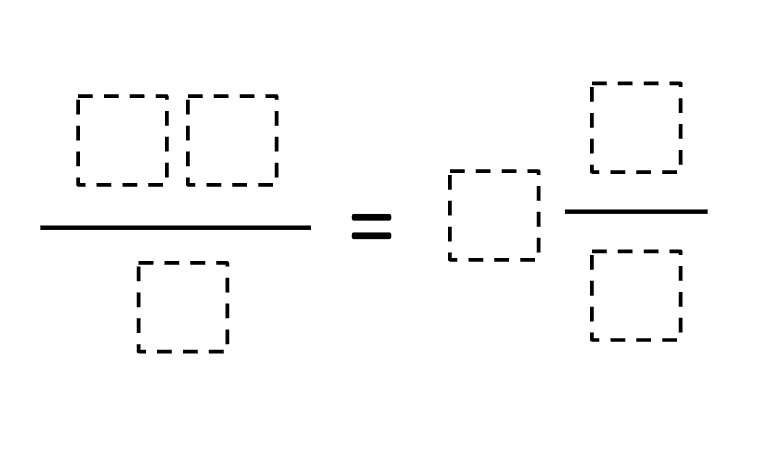Directions: Using the digits 0 to 9 at most one time each, place a digit in each box to make the equality true.

Hint
What do you notice about the options for the denominators? What could they be? What can they not be?
Answer
There are multiple correct answers: 38/4 = 9 1/2, 36/8 = 4 1/2, 75/9 = 8 1/3
Source: Graeme Lachance
 Open Middle®
Open Middle®



If we allow 0 in the ten-place of the numerator of the left fraction, then we wouldn’t have a two-digit-number in the numerator anymore, so I’m going to exclude that case. If we allow 0 in the numerator of the fraction on the right, we’d be essentially searching for fractions on the left that have a whole-numbered value, so I’m going to exclude those too. If we allow 0 as the whole part of the mixed fraction, it wouldn’t really be a mixed number anymore, so I’m going to exlude that case also. The only place where a 0 is still allowed now is in the one’s place of the number in the numerator of the fraction on the left.
Then I’m going to exclude solutions where the fractional part of the mixed number on the right is an improper fractions, because it would be unconventional to use an improper fraction in a mixed number and would create strange solutions like 10/2 = 3 8/4. We’re now left with 20 solutions, the first fifteen of which have the fractional part of the mixed number on the right in its simplest form:
26 / 8 = 3 1/4
30 / 4 = 7 1/2
36 / 8 = 4 1/2
38 / 4 = 9 1/2
45 / 6 = 7 1/2
48 / 9 = 5 1/3
50 / 6 = 8 1/3
50 / 8 = 6 1/4
57 / 6 = 9 1/2
57 / 9 = 6 1/3
58 / 6 = 9 2/3
60 / 8 = 7 1/2
62 / 8 = 7 3/4
75 / 9 = 8 1/3
76 / 8 = 9 1/2
15 / 4 = 3 6/8
17 / 3 = 5 4/6
17 / 3 = 5 6/9
23 / 4 = 5 6/8
31 / 4 = 7 6/8
why are you posting the answers!







Ya why?…….
Ya why?……
30/4 = 7 1/2